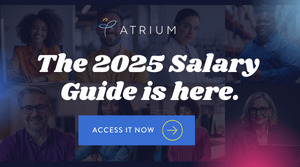The long-term impact of COVID-19 on talent acquisition, infrastructure, compensation, and remote work is still unknown for many organizations. However, understanding your future workforce starts by understanding current trends. So we’ve aggregated survey responses from varying industries and sectors to provide perspective on current workforce trends.
COVID-19 Employer Survey Results:

Workforce Trends: Projected Hiring Needs
Responders of our COVID-19 Employer Survey revealed that across the board there is an immediate need for hiring essential workers as companies continue to strategize and move closer to a phased re-opening of our economy. Such roles included, cashiers and contactless payment support, curbside pickup support, greeters and doorman, stock support, facilities management, wellness and temperature checkers. Survey results also showed we can anticipate an amplified need for the following roles when hiring future talent:
1. PR/Communications
A resource for internal engagement and public outreach was mentioned throughout survey results across all industries. Being prepared to quickly react and respond when a crisis strikes is critical. Beyond that, remote work requires consistent, transparent and more frequent communication. Employers who may not have felt there was a need for this role in their organization previously are actively recruiting Communications Specialists.
2. Customer Service
The “experience,” looks different today. But, it is still in high-demand! For many businesses, increased demands have resulted in an influx of hiring to maintain uninterrupted service during these times. As companies adjust and adhere to new norms, we can assume Customer Experience and building brand loyalty will remain top priority.
3. Technology/IT
We’ve gone digital! And, a digital workplace needs the right support and tools in place to be effective. Survey results demonstrate that a growing number of roles for tech and IT is required for a tech-forward organizational structure in our near future.
4. Admin / Operations
Many businesses learned that an investment in operational efficiency offers a valuable return. To better support the existing infrastructure of businesses post-COVID along with our return to the physical office space, operational roles are being sought after by employers.
Workforce Trends: Additional Resource Needs
1. Talent Development & Internal Talent Mobility
Companies are continuing to look to develop their talent through professional training in ways that enrich them as well as their organization. Encouraging mobility within the organization can result in higher employee productivity, increased workplace satisfaction and improved team collaboration.
2. Financial + Mental Wellness Programs
Studies show that financial stress can cause workplace issues such as turnover and decreased employee productivity and engagement. Additionally, the impact of COVID-19 has put a strain on many people’s mental health due to the nature of rapid reorganization lingering unknowns. Mental and financial wellness programs were already recently trending topics among HR executives. However, it is probable that employers will put an added emphasis on both moving forward.
3. Enhanced Flexibility and Remote Work
Requests for remote work and flexible schedules are on the rise as employees continue to adapt and become more comfortable with a WFH lifestyle in the weeks that pass during quarantine. When planning for the future, companies must weigh cost savings and retention against the perceived or existing lack of oversight. As more and more businesses adopt flex work, leaders should consider how this could help in attracting the best talent available.
4. Digital Engagement Tools
Finding ways to engage remote employees during COVID-19 has been a challenge for many during this time. Organizations have put in years of strategy development to build a strong culture within their workplace. Now, businesses are getting creative and shifting virtual communities. By securing virtual tools, you can better engage your workforce from a distance.
On behalf of the modern workforce, thank you for sharing your responses so we can learn alongside our community.











